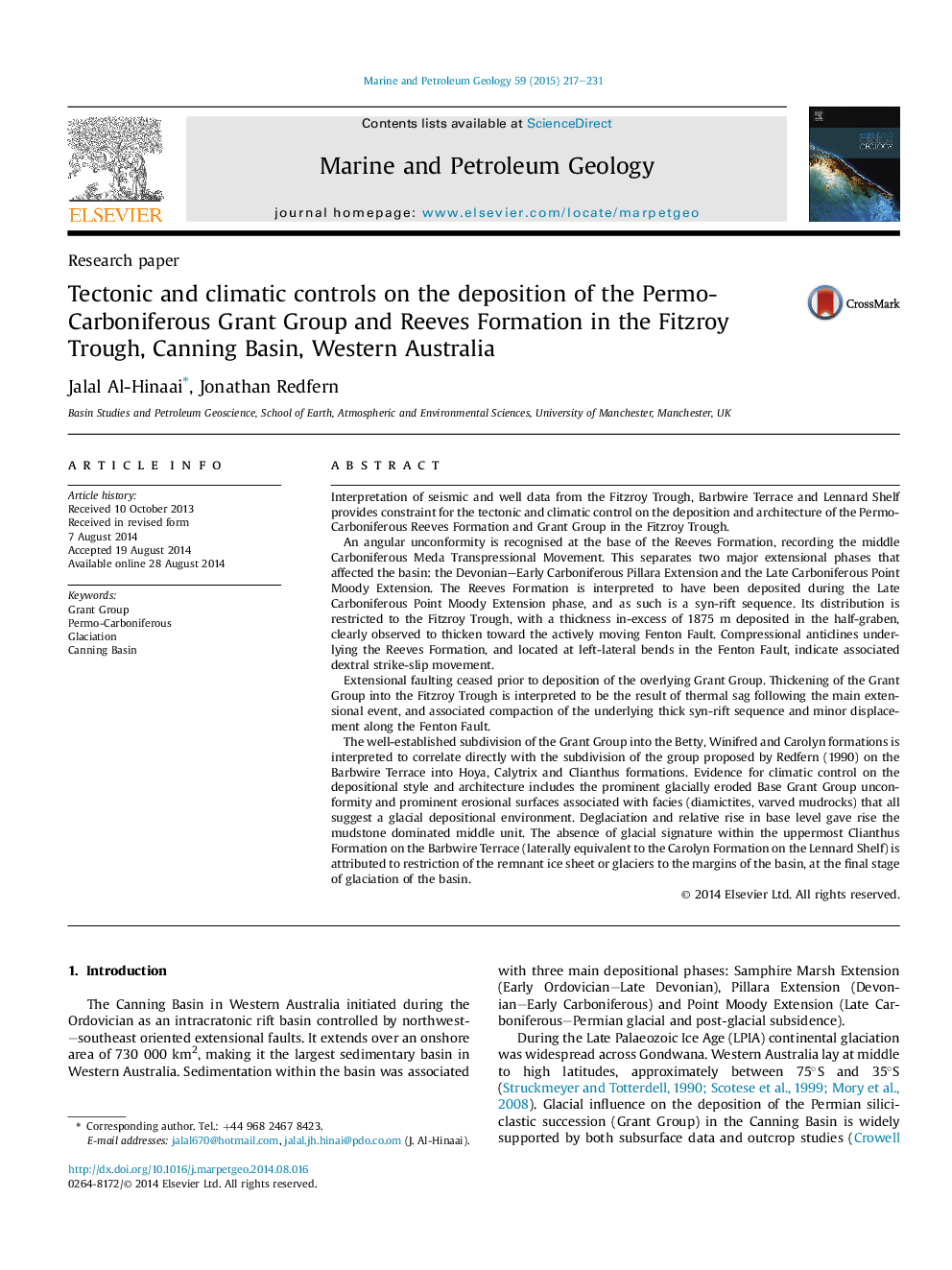| کد مقاله | کد نشریه | سال انتشار | مقاله انگلیسی | نسخه تمام متن |
|---|---|---|---|---|
| 4695617 | 1637166 | 2015 | 15 صفحه PDF | دانلود رایگان |
• The Reeves Formation is interpreted as a syn-rift sequence restricted to the Fitzroy Trough.
• The Meda Transpressional Movement resulted in angular unconformity and compressional anticlines.
• Extension ceased prior to the deposition of the Grant Group.
• The Grant Group was deposited during a post-rift sag phase.
• The Grant subdivision Betty–Winifred–Carolyn correlates with Hoya–Calytrix–Clianthus Formations.
Interpretation of seismic and well data from the Fitzroy Trough, Barbwire Terrace and Lennard Shelf provides constraint for the tectonic and climatic control on the deposition and architecture of the Permo-Carboniferous Reeves Formation and Grant Group in the Fitzroy Trough.An angular unconformity is recognised at the base of the Reeves Formation, recording the middle Carboniferous Meda Transpressional Movement. This separates two major extensional phases that affected the basin: the Devonian–Early Carboniferous Pillara Extension and the Late Carboniferous Point Moody Extension. The Reeves Formation is interpreted to have been deposited during the Late Carboniferous Point Moody Extension phase, and as such is a syn-rift sequence. Its distribution is restricted to the Fitzroy Trough, with a thickness in-excess of 1875 m deposited in the half-graben, clearly observed to thicken toward the actively moving Fenton Fault. Compressional anticlines underlying the Reeves Formation, and located at left-lateral bends in the Fenton Fault, indicate associated dextral strike-slip movement.Extensional faulting ceased prior to deposition of the overlying Grant Group. Thickening of the Grant Group into the Fitzroy Trough is interpreted to be the result of thermal sag following the main extensional event, and associated compaction of the underlying thick syn-rift sequence and minor displacement along the Fenton Fault.The well-established subdivision of the Grant Group into the Betty, Winifred and Carolyn formations is interpreted to correlate directly with the subdivision of the group proposed by Redfern (1990) on the Barbwire Terrace into Hoya, Calytrix and Clianthus formations. Evidence for climatic control on the depositional style and architecture includes the prominent glacially eroded Base Grant Group unconformity and prominent erosional surfaces associated with facies (diamictites, varved mudrocks) that all suggest a glacial depositional environment. Deglaciation and relative rise in base level gave rise the mudstone dominated middle unit. The absence of glacial signature within the uppermost Clianthus Formation on the Barbwire Terrace (laterally equivalent to the Carolyn Formation on the Lennard Shelf) is attributed to restriction of the remnant ice sheet or glaciers to the margins of the basin, at the final stage of glaciation of the basin.
Journal: Marine and Petroleum Geology - Volume 59, January 2015, Pages 217–231
